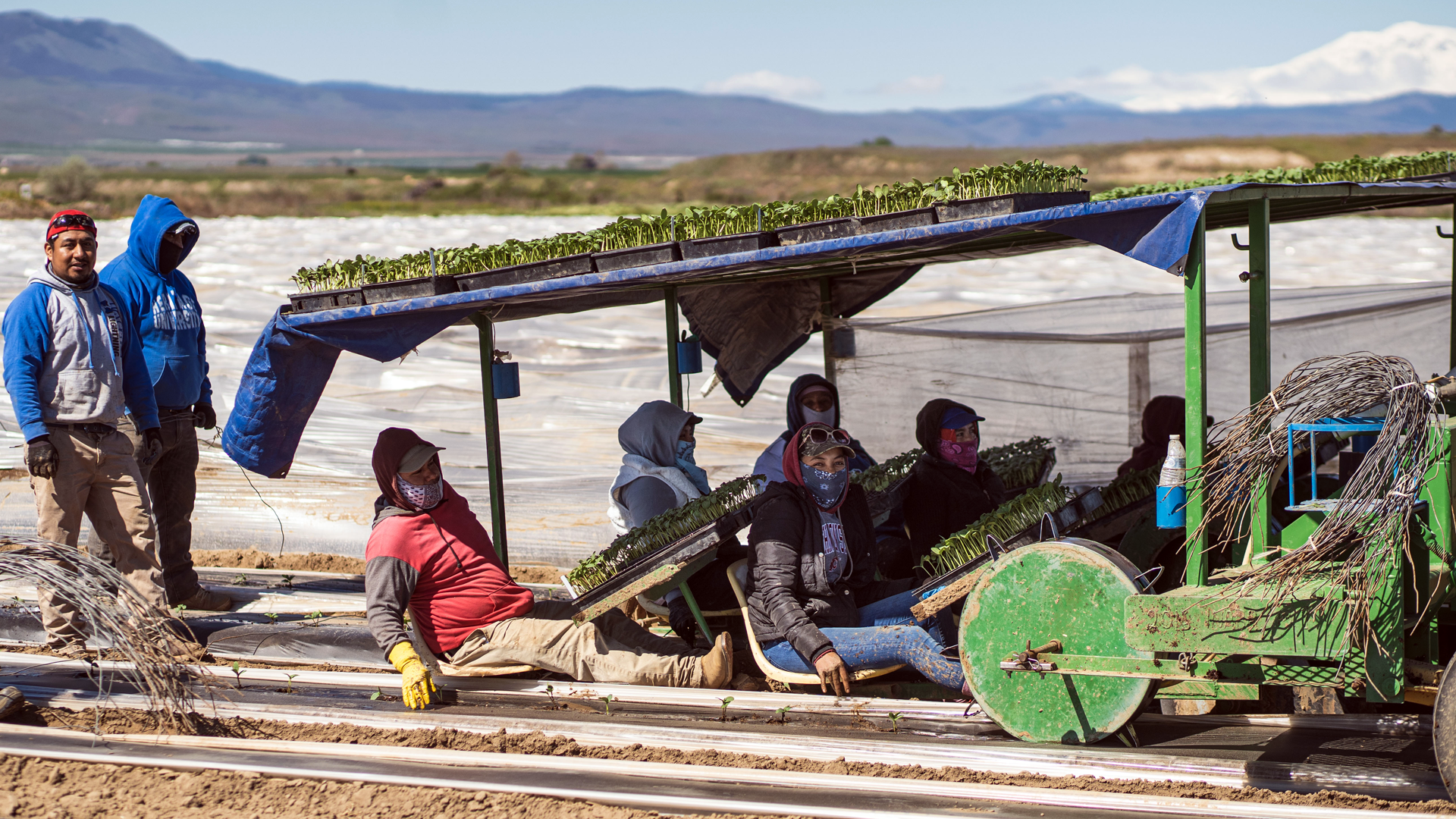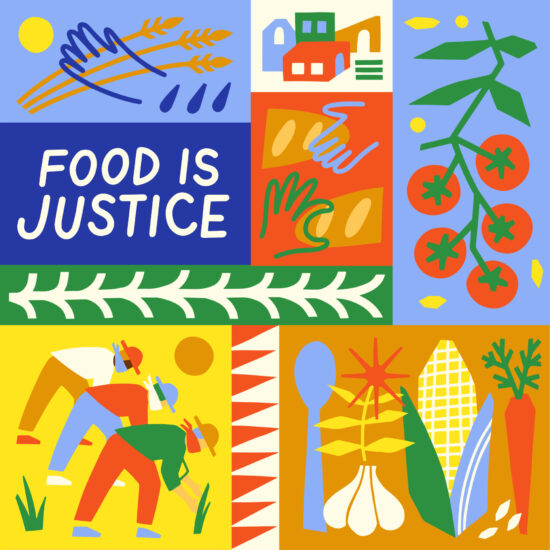This story is part of The Meaning of Food, Northwest Harvest’s yearlong exploration of food’s meaning in our lives and communities.
Imagining a Just Food System
Imagine…
a Washington where everyone has affordable access to nutritious, culturally familiar food from local growers who earn thriving wages. Your food travels less than 200 miles from farm to kitchen; your food is grown, harvested, transported, and sold within your region. This local food system increases resilience, reduces supply chain disruptions, and dramatically cuts greenhouse gas emissions.
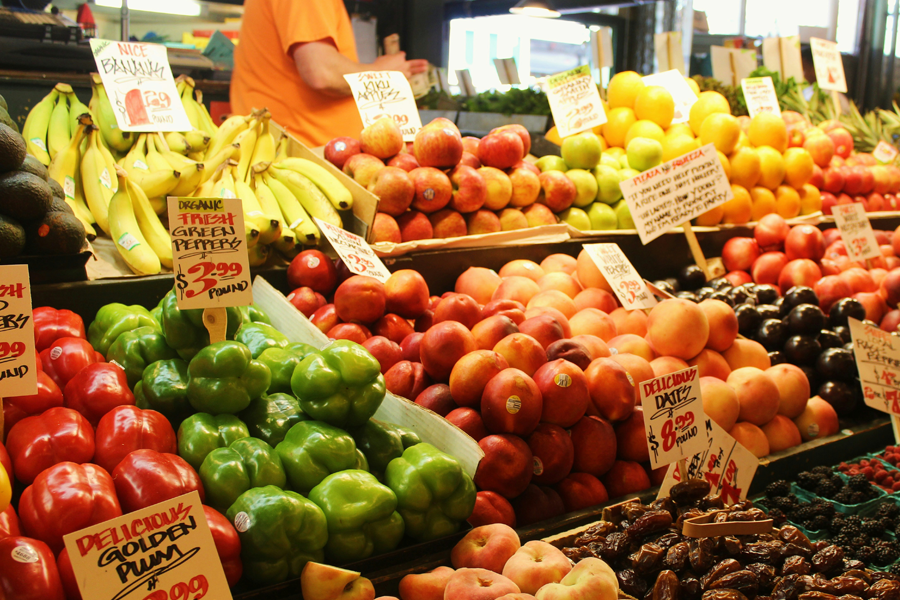
Imagine…
a food system transformed by ethical, organic, and regenerative agricultural practices. Where industrial agriculture and monocropping have given way to sustainable farming focused on feeding people, not producing livestock feed and biofuels. Where regulations ensure food safety and environmental protection, and harmful chemicals have been dramatically reduced.
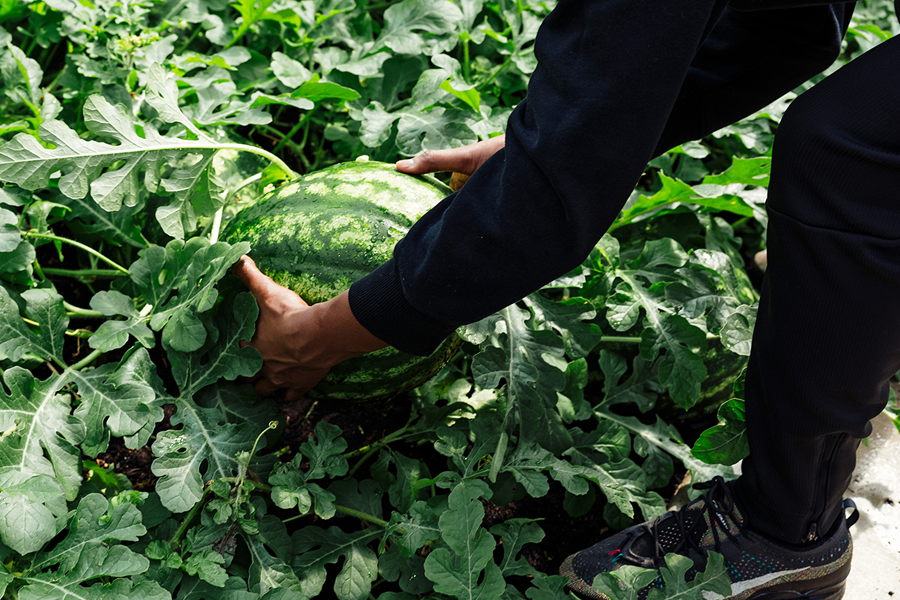
Imagine…
Indigenous land rights prioritized and protected, with Native communities leading meaningful stewardship of land and resources. Where marginalized communities have access to land, capital, and resources to become farmers. Where farming provides viable livelihoods, workers enjoy strong protections, and a new generation of diverse farmers transforms our agricultural landscape.
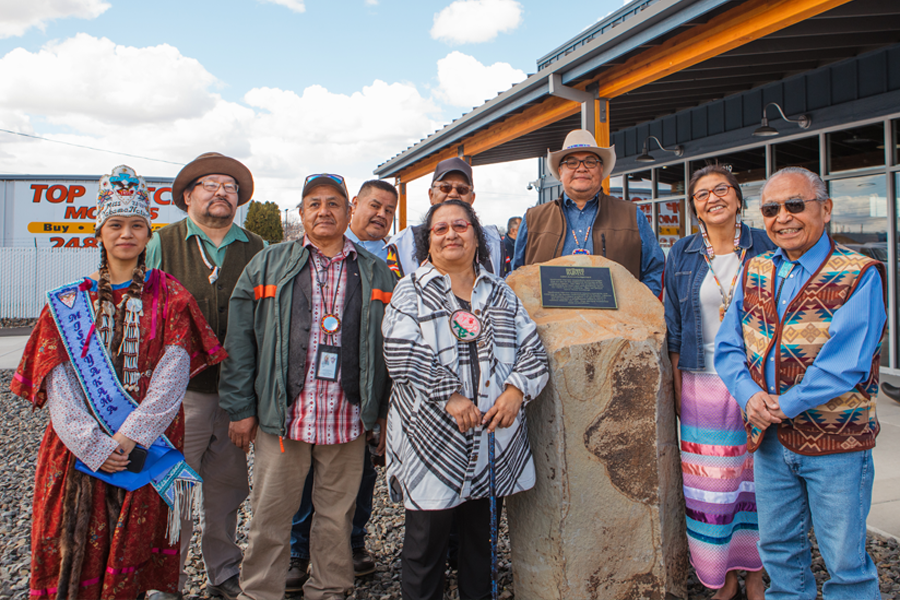
Imagine…
fruit trees flourishing in public parks, food forests and urban farms feeding communities, and gardens blooming on sidewalk strips, school campuses, and apartment building decks. Neighbors exchanging seeds and plant starts, stocking Little Free Pantries, and sharing growing wisdom. No food goes to waste for aesthetic reasons. Community networks ensure surplus reaches those who need it most.
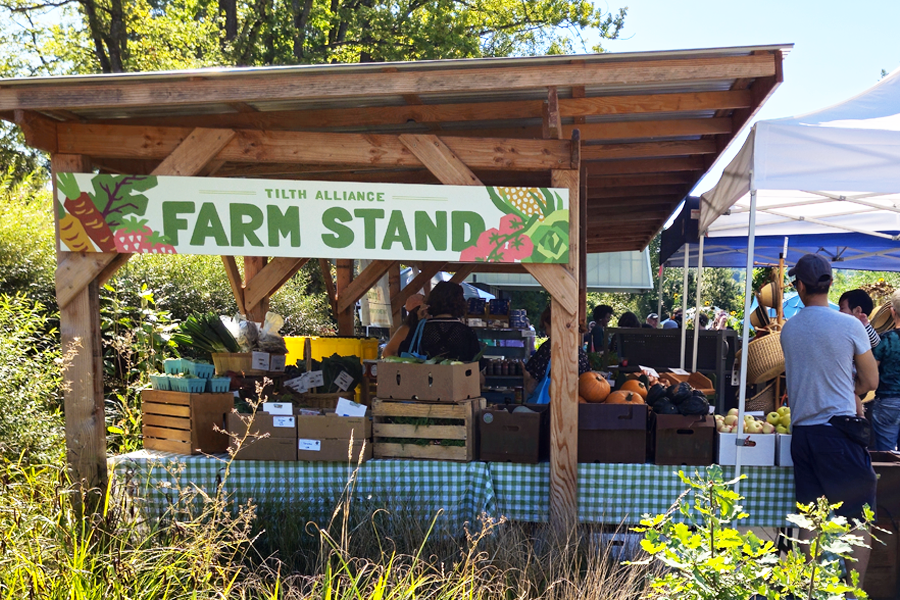
Imagine…
schools where every child eats breakfast and lunch at no cost. Where lunch debt is a thing of the past, and families no longer face the stigma of inability to pay. Where children receive nutrient-dense, seasonal foods that support their development, health, and academic success.
You’ve just imagined what a just food system would look like.
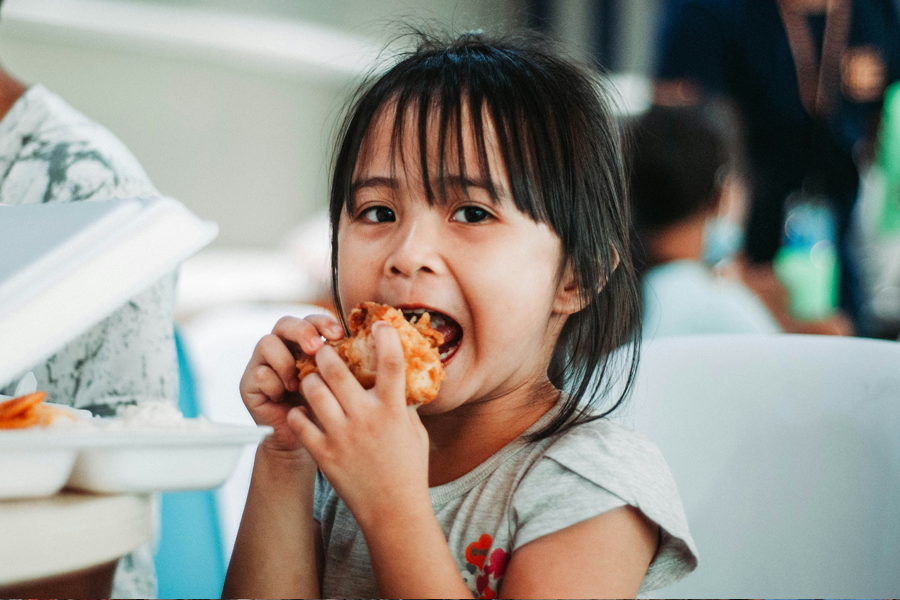
Where We Are Now
The gap between this vision and our current reality reveals deep systemic inequities in Washington’s food system and across our nation.
In 2023, 708,000 Washingtonians lived in poverty—9.1% of our population—including 158,000 children. While our state’s food insecurity rate of 9.5% falls below the national average of 12.2%, this statistic masks stark disparities in who goes hungry.
Current Food System Impact
Our current global food system's footprint is staggering:
- Agriculture occupies roughly half of Earth’s plant-habitable surface.
- Agriculture uses 69% of extracted fresh water.
- Agriculture is responsible for 25-30% of greenhouse gas emissions.
- Only 55% of the world’s crop calories feed people directly; 36% go to livestock and 9% to biofuels and industrial products.
- An estimated 25% of food calories and up to 50% of total food weight are lost or wasted before reaching consumers.
Food costs in western Washington have risen 20% since 2021, driving increased reliance on food banks. Over one-third of food-insecure households fall into a devastating gap: earning too much to qualify for federal assistance but too little to consistently afford healthy food.
Hunger's impact varies significantly across demographics:
- White individuals: 58.5% of population, 44% of those below poverty line
- Hispanic/Latine individuals: 19.3% of population, 28.4% below poverty line
- Black individuals: 13.5% of population, 20.1% below poverty line
- Asian individuals: 6.5% of population, 4.9% below poverty line
- American Indian and Alaska Native individuals: 1.2% of population, 2.6% below poverty line
- Individuals of two or more races: 2.9% of population, 3.1% below poverty line
Food insecurity rates increased significantly in 2023:
- Over one in three Black adults (35.1%)
- Nearly two in five Hispanic/Latine adults (38.7%)
- Children of color experience food insecurity at more than double the rate of white children (14% vs 5.9%)
Risk Factors
Food insecurity rates are higher among:
- Households with children
- LGBTQIA2S+ individuals
- Low-income renters compared to homeowners
These disparities reflect historical and ongoing systemic inequities in land access, economic opportunity, and resource distribution. They demonstrate why ending hunger requires more than food—it demands transformative change in how our food system operates and who holds power within it.
Change Makers Leading the Way
Across Washington, grassroots organizations are building more just food systems. Here are just a few of the organizations that we see out there doing great work:
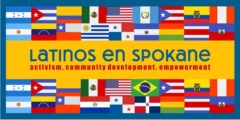
Latinos en Spokane builds capacity within Latino immigrant families through inclusive community engagement, connecting communities to resources through their El Mercadito farmers market while advancing immigrant rights and food justice.
Na’ah Illahee Fund supports Indigenous food sovereignty through community-led programs that strengthen traditional food systems and medicine practices across Native communities.
Feed the People builds food sovereignty in Seattle through mutual aid, operating community kitchens and pantries, while distributing meals and groceries directly to neighbors.
Community to Community Development advances food sovereignty and farm worker rights in Bellingham through domestic fair-trade practices and worker-owned cooperatives.
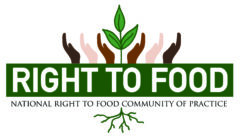
National Right to Food Community of Practice is a membership-based national coalition of advocates and organizations working to advance the right to food. We interviewed the Community of Practice director, Alison Cohen in February 2024. Read the story!
Join the Movement for Food Justice
Your voice matters in creating a more just food system.
Here's how to get involved:
- Share your food justice story through our video platform
- Meet the artists bringing fresh perspectives to our understanding of hunger through their monthly artwork
- Support local BIPOC-led food initiatives
- Follow food justice organizations on social media and amplify their work
- Learn about food sovereignty and anti-racist approaches to food justice
- Consider volunteering with, or donating to, local food justice organizations
- Advocate for policy changes that advance food justice
- Join or support mutual aid networks in your community (you can help keep your neighborhood Little Free Pantries stocked!)
- Connect with your neighbors – are there people in your immediate community who might need a ride to a food pantry or the grocery
Northwest Harvest affirms that hunger is unacceptable, entirely solvable, and our collective responsibility to address. Every person deserves reliable access to nutritious, culturally familiar food. Through shared action and advocacy, we can build a food system that serves all communities equitably.
Ready to share what food justice means to you?
Citations:
- https://attra.ncat.org/publication/food-miles-background-and-marketing/
- https://www.metabolic.nl/publication/global-food-system-an-analysis/
- https://fordhampoliticalreview.org/beyond-aesthetics-tackling-food-loss-by-rethinking-cosmetic-standards/
- https://www.nationalgeographic.com/foodfeatures/feeding-9-billion/
- https://frac.org/healthy-school-meals-for-all
- https://www.wfpusa.org/articles/effects-child-nutrition-academic-performance-how-school-meals-can-break-cycle-poverty/
- https://foodrevolution.org/blog/monocropping-monoculture/
- https://www.who.int/news-room/fact-sheets/detail/pesticide-residues-in-food
- https://landback.org/
- https://sustainableagriculture.net/blog/examining-the-latest-agricultural-census-data/
- https://www2.census.gov/programs-surveys/demo/tables/p60/283/spm_opm_state_by_age.xlsx
- https://css.umich.edu/publications/factsheets/food/us-food-system-factsheet
- https://www.census.gov/library/publications/2024/demo/p60-283.html#:~:text=In%202023%2C%20the%20official%20poverty,percentage%20points%20to%2011.1%20percent
- https://www.metabolic.nl/publication/global-food-system-an-analysis/
- https://www.ers.usda.gov/topics/food-nutrition-assistance/food-security-in-the-u-s/interactive-charts-and-highlights/#States
- https://www2.census.gov/programs-surveys/demo/tables/p60/283/spm_opm_state.xlsx
- https://www.urban.org/sites/default/files/2024-04/Food_Insecurity_Increased_for_the_Second_Straight_Year_in_2023.pdf
- https://www.feedingamerica.org/about-us/press-room/usda-food-security-2023
- https://komonews.com/news/local/food-prices-surge-driving-more-families-food-banks-washington-state-cost-of-living-housing-groceries-insecurity-us-government-accountability-office-partner-organizations-volunteers

